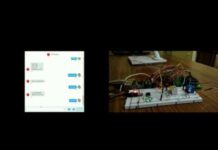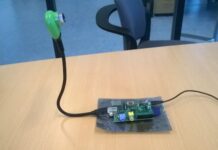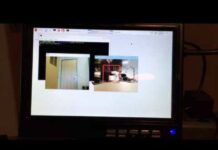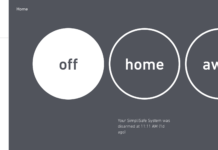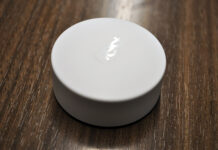Congress is back on IoT security bills: Maybe we won’t get any meaningful data privacy legislation, it appears that the US House and the US Senate have picked up a device security bill again. This particular bill gives the National Institute of Standards and Technology the power to define security for connected devices and direct federal agencies to secure and acquire devices that they have or will buy. It also charges NIST with tracking and disclosing new security vulnerabilities. Broadly, this is flexible and good legislation that gives an agency with plenty of technical expertise a role in ensuring government IoT devices are secure. IF I wanted to quibble, I’d say that the time frames associated with the disclosure and remediation of vulnerabilities are too slow. The bill says NIST and the agencies have to complete such tasks in180 days. NIST also will have to reevaluate how to secure devices every five years, which feels like a long time in the fast-moving world of technology. But still, it’s a start and it’s a better one than I have seen from Congress. (Cnet)
GE Appliances signs up with Cirrent for Wi-Fi onboarding: Cirrent makes software that helps companies get their devices on Wi-Fi networks. The company has deals in place so devices running its software can hop onto the public-facing networks of ISPs around the country. Thus, when a customer unboxes a device, it’s already able to connect to a network and the user can just swap the credentials over to their own network. I like this approach because Wi-Fi activation can be a total pain. But I worried that an unscrupulous company might employ this to connect devices that a consumer didn’t intentionally connect. Basically, instead of the device sitting on the consumer’s own network, it could be connected to the public-facing network still sending data. In the case of GE Appliance, a spokesperson says that when a customer buys and installs a smart GE Appliance, they need to turn the Wi-Fi module on, before it will try to connect to any network. If the customer does turn on their Wi-Fi and it connects to a router that is supported by Cirrent, GE Appliances still does not start collecting any data or information about the product until the consumer takes the step to create an account and gives GE explicit permission. As an added safeguard, the Wi-Fi will only be on without joining an account for a limited period of time. Good on GE Appliances for making the process as privacy friendly as possible. (GE Appliances)
A breakdown of a delightful smart light: I was pleasantly surprised by the Casper Glow bedside table lamp when it launched. The user interface has some real thought behind it, and it seemed like a product I’d like to use. Well, it turns out I am not alone (sometimes my love of gadgets does leave me alone). Bolt VC did a teardown of the light to see how it works and exposed a pretty elegant design that uses tech to make an easy-to-use product that works well even if you never download an app. YES! (Bolt)
A fascinating way to NOT develop an IoT product: This Reddit conversation, which kicked off by someone asking if anyone would want a sensor that can magnetically sit on an appliance and detect basic functions (is it on or off, etc.), offers a revealing look into where tech people have gone wrong when it comes to the IoT. The proposed product is a good idea in theory, and we at the show get a ton of questions that something like this would address, but the engineer proposing the idea hasn’t gone far enough. When addressing the mainstream market you can’t ask if people want a tech that’s feasible. You have to know generally what it will cost to make (and thus sell), as well as establish how it would connect to the home and how folks would interact with it. After all, what’s technically feasible isn’t always a marketable idea. I also love the comments requesting local control and particular radio technologies. Again, this is totally reasonable for a certain subset of the population, but the complexity and cost that some of these things will add will render the sensor unsuitable for everyone else. I’m not mocking these folks; I’m identifying with them. When I started covering this space, I felt for sure that people would want local control and would spend crazy amounts of money on products that allowed them to connect devices simply for the sake of connecting them. I’ve since learned that while people who think like me might be building these products, the mainstream has completely different criteria that often starts with price and a clearly stated use case. (Reddit)
Did you know there was an ML framework for microcontrollers? I didn’t, but this sort of thing is impressive. And by following the instructions here, you could train and load models onto a low-power microcontroller so you could build a sensor that would detect anything from a wake word to whether an appliance has started making weird noises. I like it! (Hackster.io)
In decentralized systems we need dumber things, not smarter ones: One of the big questions about a true internet of things, where there are billions of sensors, is how we make things work together without human intervention. Humans can’t scale that far. This article explains why it may be advantageous to limit the number of events that connected sensors or gateways can remember if we want to make the IoT capable of reacting as part of a decentralized system absent human control. (Quanta)
Dieters get a useful Alexa skill: Just after reading Kevin’s article on the lack of life-changing skills for smart speakers, I ran across a story about how WW (formerly Weight Watchers) has built a skill for Google Assistant and Amazon Echo devices that lets people inquire how many points they have left (WW works by giving dieters a set number of points) or what food they could choose. Since I have long wanted a similar functionality for adding water consumption to my FitBit or to verbally add for to my calorie counter, I’m all in on such highly specific skills. (Marketing Land)
Does this thing support NB-IoT? In a former life, I covered satellite broadband and its many challenges. So I was excited to read about UbiquitiLink, which is able to provide messaging capability to today’s smartphones using satellite transmissions. This is a big deal because it provides operators a way to cover dead zones without investing in bulky, satellite-capable handsets. Granted, this is a message capable of being sent once an hour, but it sounds perfect for some IoT use cases. Getting rid of the need for a satellite-capable receiver on the ground could lower costs and boost battery life for a whole generation of sensors — that is if, eventually, this works on NB-IoT. Currently, it works on 2G and the company plans to launch a service that works on LTE bands soon. (Light Reading)
C3 rolls out a way to ease developers into its platform: I often hear complaints about industrial IoT company C3 and its ability to scale. The company provides software to help get a customer’s data into the cloud and then provides tools to analyze it. Oftentimes using the data to build machine learning models or new applications is tough enough that C3 has to provide consulting services as well. This is a limiting factor. However, this week it launched a new platform to make it easier for developers to take their data, build models and deploy applications all without having a deep knowledge of programming. This could help C3 as customers scale out on the platform. (ZDnet)
The post IoT news of the week for March 15, 2019 appeared first on Stacey on IoT | Internet of Things news and analysis.




